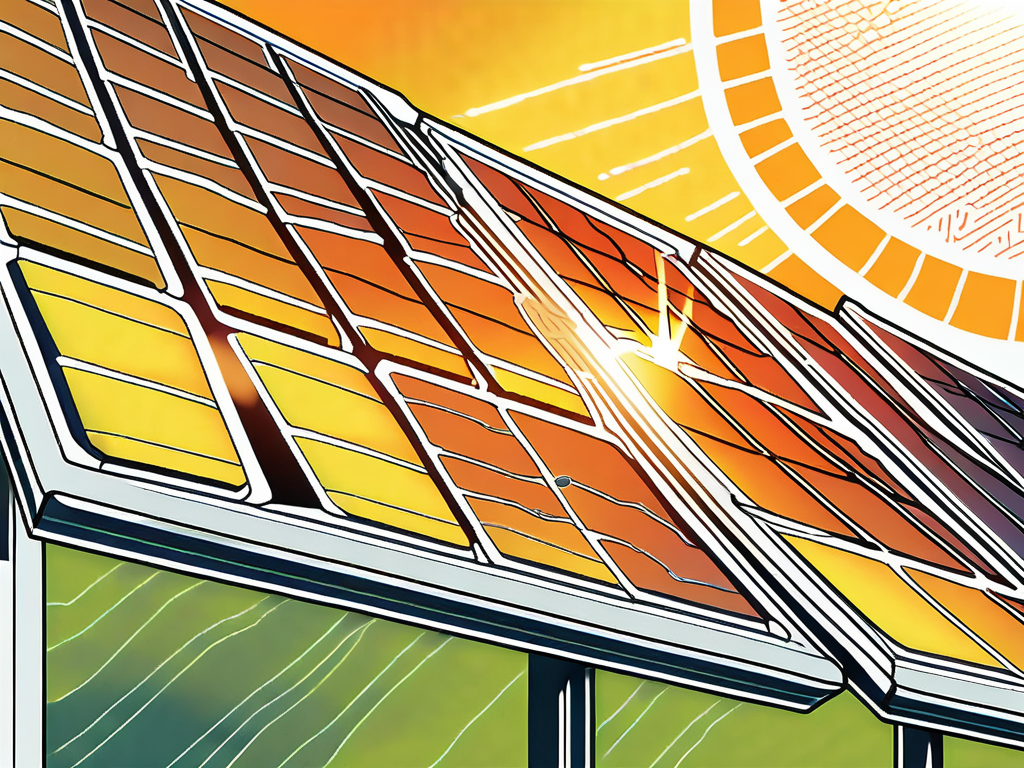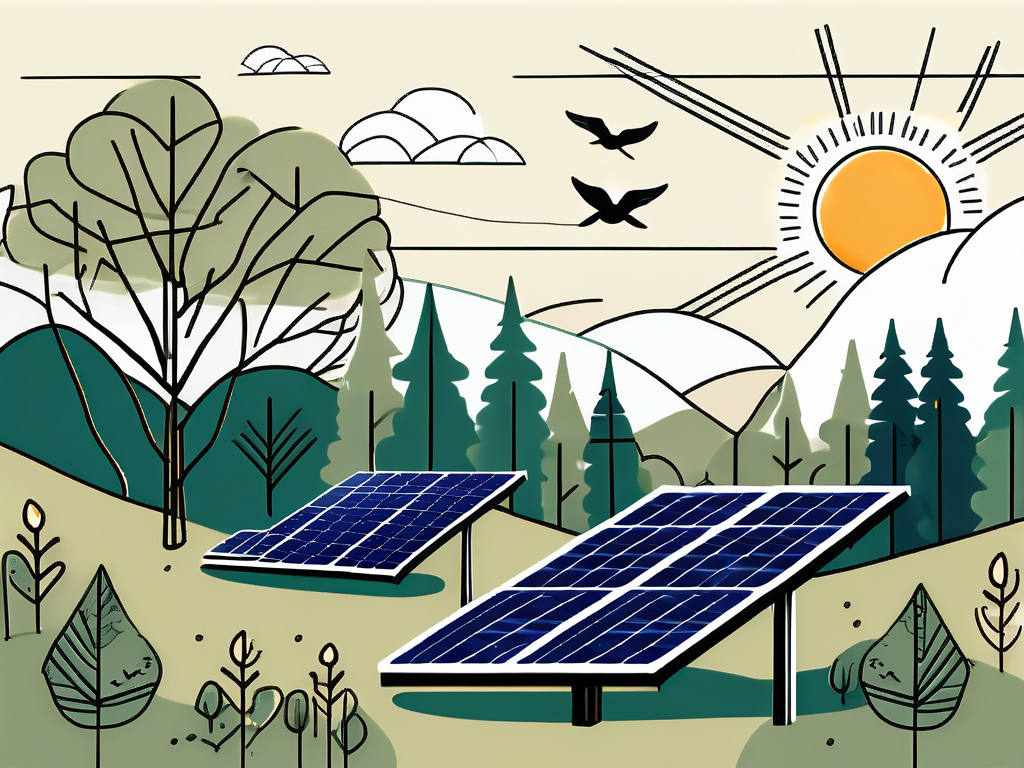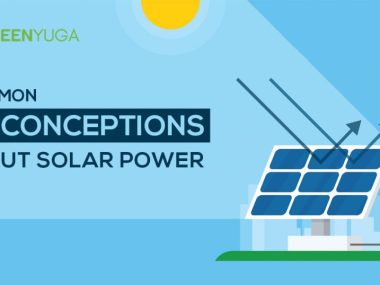How Does Solar Energy Impact the Environment?
Solar energy is a renewable and sustainable source of power that has become increasingly popular in recent years. This clean form of energy has numerous benefits for the environment and can help reduce the negative impacts of traditional energy sources. In this article, we will explore the various ways in which solar energy impacts the environment.
Understanding Solar Energy
The Basics of Solar Power
Solar power is a renewable energy source that is generated through the use of photovoltaic cells. These cells, commonly made of silicon, a semiconductor material, play a crucial role in converting sunlight into electricity. When sunlight reaches the photovoltaic cells, the photons present in the sunlight interact with the silicon material, causing the electrons in the cells to become energized. This process results in the generation of an electric current, which can then be harnessed for various applications.
 The utilization of solar power offers numerous environmental benefits, as it is a clean and sustainable energy source that produces no harmful emissions or byproducts. By harnessing the power of the sun, individuals and communities can reduce their reliance on fossil fuels and contribute to the mitigation of climate change.
The utilization of solar power offers numerous environmental benefits, as it is a clean and sustainable energy source that produces no harmful emissions or byproducts. By harnessing the power of the sun, individuals and communities can reduce their reliance on fossil fuels and contribute to the mitigation of climate change.
How Solar Panels Work
Solar panels, also referred to as solar modules, consist of an interconnected assembly of photovoltaic cells that work together to capture and convert sunlight into electricity. These panels are strategically placed on rooftops or in open areas to maximize their exposure to sunlight throughout the day. As sunlight strikes the surface of the solar panels, the energized electrons within the photovoltaic cells create an electric current. This generated electricity is then channeled through an inverter, where it is converted from direct current (DC) to alternating current (AC), making it suitable for powering homes, businesses, and other electrical devices.
Furthermore, advancements in solar panel technology have led to the development of more efficient and cost-effective solar energy systems. Innovations such as thin-film solar panels and bifacial solar panels have expanded the possibilities for solar power integration in various settings, offering flexibility in installation and improved energy production. As the demand for renewable energy continues to grow, solar power stands out as a reliable and sustainable solution for meeting the world’s energy needs.
Environmental Benefits of Solar Energy
Reduction in Greenhouse Gas Emissions
One of the most significant advantages of solar energy is its contribution to reducing greenhouse gas emissions. Unlike fossil fuels, solar energy does not release carbon dioxide or other harmful pollutants into the atmosphere. By decreasing our reliance on fossil fuels and transitioning to solar energy, we can mitigate climate change and its devastating effects.
 Furthermore, the process of generating electricity from solar panels produces no air or water pollution, making it a clean and sustainable energy source. This not only helps in combating global warming but also improves air quality, leading to a healthier environment for all living beings.
Furthermore, the process of generating electricity from solar panels produces no air or water pollution, making it a clean and sustainable energy source. This not only helps in combating global warming but also improves air quality, leading to a healthier environment for all living beings.
Read more>>>>>>>>
Understanding the ways of using grid electricity or solar power
Decrease in Water Usage
Traditional energy production methods, such as coal and nuclear power plants, require large amounts of water for cooling and operational purposes. In contrast, solar energy does not need water to generate electricity. By utilizing solar power, we can conserve valuable water resources and minimize the strain on local ecosystems.
Moreover, the reduced water consumption in solar energy production plays a crucial role in water conservation, especially in regions facing water scarcity. This aspect of solar energy highlights its sustainability not only in terms of energy generation but also in preserving essential natural resources for future generations to come.
Potential Environmental Drawbacks of Solar Energy
Manufacturing and Disposal of Solar Panels
While solar panels provide clean energy, their manufacturing and disposal processes can have environmental consequences. The production of solar panels involves the use of toxic chemicals and rare earth metals, which can harm the environment if not properly managed. Additionally, the disposal of old or damaged solar panels must be done responsibly to prevent pollution and minimize waste.
Furthermore, the energy-intensive manufacturing process of solar panels contributes to carbon emissions, offsetting some of the environmental benefits of using solar energy. Efforts are being made to develop more sustainable manufacturing practices, such as recycling materials and reducing energy consumption during production.
Land and Habitat Impact
The installation of solar farms or large-scale solar power plants requires a significant amount of land. In some cases, this can lead to the destruction or disruption of natural habitats. However, technological advancements such as floating solar panels and the use of already disturbed land can minimize the impact on valuable ecosystems.
It is crucial to conduct thorough environmental impact assessments before the construction of solar energy projects to identify potential risks to wildlife and ecosystems. Collaborating with conservation organizations and local communities can help mitigate any negative effects on biodiversity and ensure sustainable land use practices are implemented.
Comparing Solar Energy to Other Energy Sources
Solar vs. Fossil Fuels
When compared to fossil fuels, solar energy has clear advantages in terms of environmental impact. Fossil fuels release greenhouse gases and contribute to air pollution, while solar energy produces zero emissions during operation. Additionally, solar energy does not depend on finite resources and provides a long-term solution for sustainable energy production.
Solar energy also offers benefits beyond environmental concerns. The installation and maintenance of solar panels create job opportunities and stimulate economic growth in local communities. Furthermore, solar power systems can be installed on a variety of scales, from small residential units to large utility-scale projects, providing flexibility and accessibility to a wide range of users.
Solar vs. Nuclear Energy
Nuclear energy is often touted as a low-emission alternative to fossil fuels. However, it comes with its own set of environmental and safety concerns, such as radioactive waste storage and the potential for nuclear accidents. Solar energy, on the other hand, has no such risks and does not produce hazardous waste materials.
In addition to being a safer option, solar energy is also more scalable and adaptable to different geographic locations. While nuclear power plants require significant infrastructure and centralized locations, solar panels can be easily installed on rooftops, in deserts, or even integrated into building materials. This versatility makes solar energy a more versatile and accessible option for a wider range of applications.
The Future of Solar Energy and Its Environmental Impact
Technological Advancements and Their Implications
Technological advancements are continuously improving the efficiency and affordability of solar energy systems. Innovations such as advanced solar panels, energy storage solutions, and smart grid integration have the potential to further enhance the positive environmental impact of solar energy. These advancements are not only making solar energy more accessible to a wider range of consumers, but they are also increasing its overall effectiveness in reducing greenhouse gas emissions.
 One significant technological advancement in solar energy is the development of advanced solar panels. These panels are designed to capture a greater amount of sunlight and convert it into electricity more efficiently. With the use of innovative materials and manufacturing techniques, these panels are becoming lighter, more durable, and more aesthetically pleasing. This means that solar panels can now be installed in a wider range of locations, including residential rooftops, commercial buildings, and even on vehicles, further expanding the reach of solar energy.
One significant technological advancement in solar energy is the development of advanced solar panels. These panels are designed to capture a greater amount of sunlight and convert it into electricity more efficiently. With the use of innovative materials and manufacturing techniques, these panels are becoming lighter, more durable, and more aesthetically pleasing. This means that solar panels can now be installed in a wider range of locations, including residential rooftops, commercial buildings, and even on vehicles, further expanding the reach of solar energy.
Policy and Regulation Considerations
Government policies and regulations play a crucial role in shaping the future of solar energy and its environmental impact. The implementation of incentives, such as tax credits and feed-in tariffs, can encourage individuals and businesses to invest in solar energy systems. These incentives not only make solar energy more financially attractive, but they also help to offset the initial costs of installation and make it a more viable option for consumers.
In addition to incentives, supportive policies can facilitate the integration of solar energy into the existing power grid. This integration is essential for ensuring a smooth transition towards a cleaner and more sustainable energy future. By implementing policies that promote the development of smart grids, governments can enable the efficient distribution of solar energy and ensure its seamless integration with other renewable energy sources. This will not only increase the overall reliability of the power grid but also reduce the dependence on fossil fuels.
Furthermore, regulations that require the use of renewable energy sources, such as solar power, in new construction projects can have a significant impact on the adoption of solar energy. These regulations can help to create a market demand for solar energy systems and encourage developers to incorporate them into their designs. By doing so, governments can ensure that new buildings are energy-efficient and contribute to the overall reduction of greenhouse gas emissions.
In conclusion, solar energy has a significant impact on the environment, offering numerous benefits over traditional energy sources. From reducing greenhouse gas emissions to conserving water resources, solar power provides a viable solution for addressing climate change and promoting sustainable development. As technology continues to advance and policies become more favorable, solar energy is poised to play an increasingly vital role in our quest for a greener and cleaner future. The future of solar energy is bright, and with continued innovation and support from governments, we can look forward to a world powered by clean and renewable energy.










